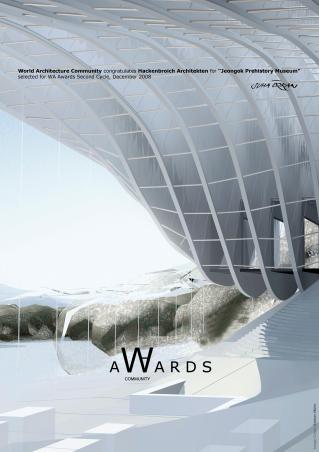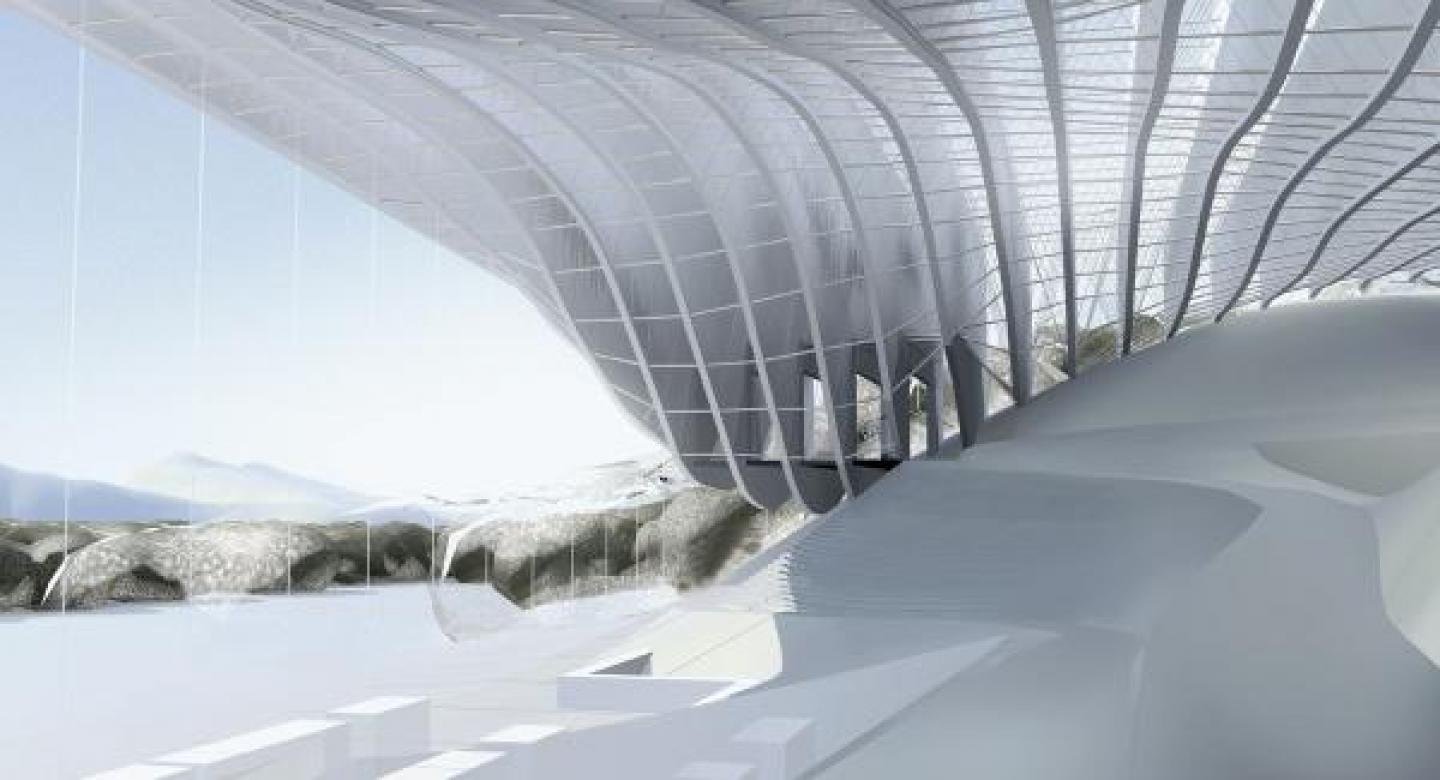The Jeongok Prehistory Museum is located in the Hantan River Park. With the discovery of the Aecheulian Hand Axe, the neighbored excavation site is considered as one of the most important Palaeolithic sites in world archaeology. Besides the presentation of artefacts the museum should give an insight to the excavation work and be an entrance to the landscape of the river Hantan.
The site is located on a slope and connects the park at the river with the excavation site. The idea is to extrapolate the existing landscape with a building that intensifies the landscape instead of reshaping it. By the manipulation of the gentle slope a path through the museum is created. It connects all public areas such as ticket office, exhibition, museum shop, lecture hall, café and restaurant.
The actual exhibition space is at the level of the entrance and continues into the hill to descend the visitors into the historic layers of the excavation hill. The exhibition space embedded in the ground, provides the spatial experience of the excavation pits.
The most visible and iconographic element of the museum is the roof. Its volumetric structure of sections spans over all museum areas. The roof is shaped by the lateral forces which determine the different heights of the sections. The sections itself are interconnected with a system of steel beams and cables, so the roof structure appears massive and very light at the same time.
2006
Jeongok Prehistory Museum by Wilfried Hackenbroich in Korea, South won the WA Award Cycle 2. Please find below the WA Award poster for this project.

Downloaded 212 times.
Favorited 2 times







